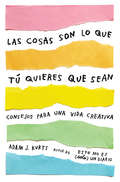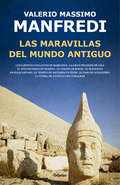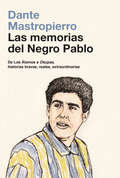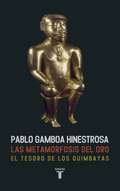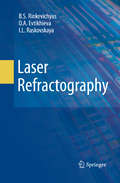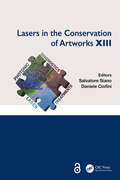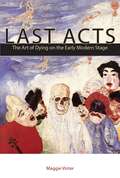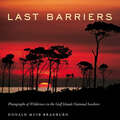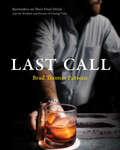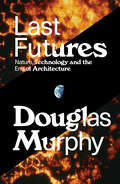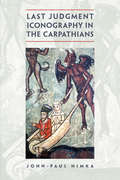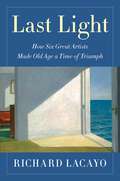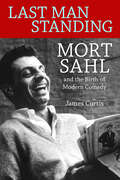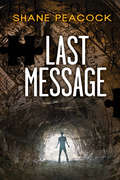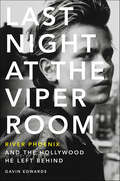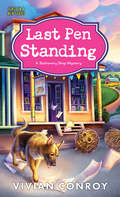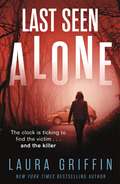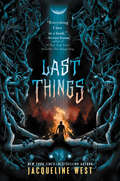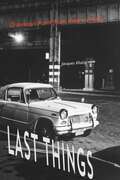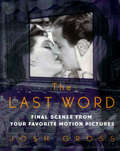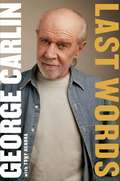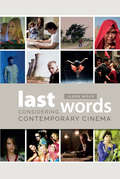- Table View
- List View
Las aventuras de la vanguardia: El arte moderno contra la modernidad
by Juan José SebreliSebreli descubre el acceso a uno de los relatos más apasionados de laactualidad: la historia de los movimientos y las vanguardias artísticasdel siglo XX. Su incursión no solo invita a transitar las distintastendencias sino a pensar acerca de las conductas y los acontecimientosque las hicieron posibles. Entre el logro técnico y la impostura exhibicionista, entre laconformidad crítica y el prestigio clandestino, entre la operaciónsolitaria y la megalomanía, Sebreli advierte los síntomas de malestar enla cultura, los matices de hastío de quienes determinan el valor de laobra de arte -museos, mecenas y otras instituciones- y los reclamos deorden y jerarquías que precipitan el relevo, las continuidades yrupturas. Con su agudeza acostumbrada, hace desfilar ante nuestros ojosdiversas manifestaciones de acatamiento ante el totalitarismo estatal yla dictadura de mercado.Los puntos de vista del autor de «El asedio a la modernidad» y «Elvacilar de las cosas» nos persuaden por su atrevimiento y su riquezaintelectual tanto cuando adopta una posición firmemente argumentativacomo cuando sostiene hipótesis riesgosas. El estilo de Sebreli es ya unade las definiciones más certeras e imprevisibles de nuestra época.
Las cosas son lo que tú quieres que sean: Consejos para una vida creativa
by Adam J. KurtzDel autor de Esto no es (solo) un diario, un manual de consejos para todos los creativos y aspirantes a artista, con altas dosis de inspiración y optimismo. ¿Crees que eres la primera persona que se siente así? ¿Que nadie ha intentado crear una obra maestra, emprender una carrera creativa o simplemente dar un primer paso artístico sin dudar de todo? Pues deja que Adam J. Kurtz te diga algo: ha pasado, y él lo ha vivido en primera persona. De aquí nace esta guía de sabios, empáticos y honestos consejos sobre el arte de crear. Consejos que podrás compartir con quien los necesite o colocar en un lugar apropiado, gracias a sus páginas extraíbles. Páginas, todas, en las que el autor imprime su sello personal con el fin de que no tires la toalla. Porque vale la pena. Adam J. Kurtz sabe de lo que habla. Y va a darte un empujoncito para que sigas tu propio viaje creativo, te lleve a donde te lleve. Reseñas:«En todo lo que hace Adam J. Kurtz hay ingenio y sabiduría, sus palabras son cálidas y maravillosas.»Alanis Morissette «Consejos divertidos, irónicos, directos.»Adweek «Da optimismo y esperanza.»NYLON «Consejos de alguien que sabe de lo que habla.»Teen Vogue «Tratar de hacer arte, ya sea profesionalmente o no, requiere fe y una enorme capacidad de superación. Las cosas son lo que tú quieres que sean de Adam J. Kurtz te recuerda que eres algo más que todas tus dudas, y que, por supuesto, no estás solo en tan incierto camino.»BuzzFeed «Este brillante libro es, además de un canto a la vida, un manual de consejos para ayudar a personas creativas a dar sentido al rechazo, al fracaso, a los comienzos en falso, a la fama, a la felicidad y a las alianzas.»Debbie Millman, responsable del podcast Design Matters
Las maravillas del mundo antiguo
by Valerio Massimo ManfrediUn fascinante recorrido por las maravillas del mundo antiguo, sus secretos, la realidad y las leyendas que las han acompañado, de la mano del Manfredi arqueólogo, apasionado por su profesión, riguroso y excelente divulgador. Los jardines que un rey hizo construir para su amada. Una tumba desmesurada para un solo hombre. Un dios con carne de marfil y ropajes de oro, sentado en su trono. Una estatua de bronce de treinta y dos metros de altura, el desafío de un discípulo a su inalcanzable maestro. El espectacular sepulcro rodeado de columnas de un reyezuelo presuntuoso. El templo más grande jamás construido, erigido para la diosa. Una torre en una islita cuya luz guiaba a los navegantes desorientados en la noche. Los jardines colgantes de Babilonia, la gran pirámide de Guiza, el Zeus de Fidias, el coloso de Rodas, el mausoleo de Halicarnaso, el templo de Artemisa y el faro de Alejandría. Son las obras más impresionantes de la Antigüedad, el orgullo de las grandes civilizaciones del pasado, que aún hoy encienden nuestra imaginación. A ellas Manfredi suma otra, menos conocida e igualmente excepcional: la tumba-santuario de Antíoco I en la cima de una montaña de Turquía. Valerio Massimo Manfredi es internacionalmente conocido como el gran autor de novela histórica sobre el mundo antiguo. Entre sus títulos más conocidos están la trilogía Aléxandros, La última legión, El tirano, El imperio de los dragones,El ejército perdido, Los idus de marzo, Odiseo. El juramento y Odiseo. El retorno. Pero Manfredi también es arqueólogo, especializado en arqueología clásica. Ha impartido clases en universidades de Italia y de otros países. Ha conducido numerosas excavaciones y ha publicado artículos y ensayos académicos, además de colaborar en periódicos y revistas. Ha escrito y dirigido documentales sobre la Antigüedad para las cadenas más importantes de televisión. Toda esta enorme dedicación a un tema que le apasiona se concentra ahora en Las maravillas del mundo antiguo, donde nos invita a viajar por la Historia y a conocer a quienes la vivieron y la estudian. Reseña:«Una narración poderosa y magnética que ofrece la posibilidad de visitar con los ojos de la mente esas maravillas, esas obras que desafiaban lo imposible.»Modena Today
Las memorias del negro Pablo
by Dante MastropierroDe Los Álamos a Okupas, historias bravas, reales, extraordinarias. A través de un anecdotario compuesto por una contundente secuencia de historias poderosas, divertidas, a veces sórdidas pero siempre auténticas, Dante Mastropierro, el actor más conocido como el Negro Pablo en la serie de culto Okupas, cuenta su vida por primera vez. De las andanzas con gomeras a las venganzas con alambres de púa, entre pistoleros de verdad y luego de ficción, de La Boca a Quilmes, de Quilmes al Docke. De los códigos de la calle a los códigos de Okupas. Una infancia de perros fieros, una madre amorosa, una soledad insoportable. Noches de baile, romances prohibidos y viejos tumberos. Los turros y los boquita de nylon. La vida antes y después de la televisión. El comedor y Maradona. Los que ya no están. "Me acuerdo de cosas que me pasaron cuando tenía dos o tres años", dice Dante Mastropierro mientras emprende un emocionante, furioso, divertido y siempre honesto recorrido por el pasado. "Me gustaría no acordarme de todo pero las cosas están ahí, en mi cabeza. Después de hacer del Negro Pablo en Okupas, muchos me decían: che, con las historias que viviste, tendrías que hacer un libro. Pero, más allá de los recuerdos, lo importante para mí es no olvidarme de dónde salí, de dónde vengo, de dónde soy". Del prólogo de Bruno Stagnaro: Había algo en él, una especie de áspera verdad callejera que saltaba a la vista y que podía funcionar muy bien en el proyecto que estábamos gestando [Okupas]. Incluso mientras filmábamos, Dante era un misterio para nosotros. Sentíamos que lo conocíamos y que podíamos confiar en él, pero al mismo tiempo había una barrera invisible... Definitivamente, percibíamos algo salvaje (que era justo lo que buscábamos), aunque todavía no conocíamos su otro lado, tan persistente como el bravío: su ternura. Diego Alonso, "El Pollo" de Okupas: Dante es el amigo más fuerte que me quedó de Okupas: un amigo para toda la vida y para las próximas vidas también. Es muy loco: cada vez que llega a un lugar, genera un frío en el ambiente, porque nadie sabe lo que puede suceder. Y eso es gracioso porque Dante es un corazón con patas, un tipo maravilloso. Ha tenido una vida complicada pero cuando cuenta cosas que a otro lo hubiesen devastado, él lo hace con alegría, siempre.
Las metamorfosis del oro: El Tesoro de los Quimbayas
by Pablo GamboaLa verdadera historia detrás del Tesoro de los Quimbayas En 1890, un grupo de guaqueros desenterraron sobre el río La Vieja, en el Quindío, un conjunto de piezas hechas en oro. Estatuillas de hombres y mujeres desnudos, cascos con figuras en relieve, poporos en forma de fruta e instrumentos musicales, eran parte de los deslumbrantes objetos. Habían sido puestos allí como ofrendas funerarias por el pueblo Quimbaya y luego de siglos bajo tierra volvían a brillar con la luz. A este grupo de piezas de admirable manufactura se le conoce como el Tesoro de los Quimbayas y este libro, del historiador del arte Pablo Gamboa Hinestrosa, reconoce el contexto cultural al momento de su extracción, traza su biografía y trata los asuntos artísticos de su orfebrería. Con las excepcionales fotografías de Juan Mayr, la historia del Tesoro conecta la obra de maestros orfebres precolombinos con el tiempo presente.
Laser Additive Manufacturing of High-Performance Materials
by Dongdong GuThis book entitled "Laser Additive Manufacturing of High-Performance Materials" covers the specific aspects of laser additive manufacturing of high-performance new materials components based on an unconventional materials incremental manufacturing philosophy, in terms of materials design and preparation, process control and optimization and theories of physical and chemical metallurgy. This book describes the capabilities and characteristics of the development of new metallic materials components by laser additive manufacturing process, including nanostructured materials, in situ composite materials, particle reinforced metal matrix composites, etc. The topics presented in this book, similar as laser additive manufacturing technology itself, show a significant interdisciplinary feature, integrating laser technology, materials science, metallurgical engineering and mechanical engineering. This is a book for researchers, students, practicing engineers and manufacturing industry professionals interested in laser additive manufacturing and laser materials processing. Dongdong Gu is a Professor at College of Materials Science and Technology, Nanjing University of Aeronautics and Astronautics (NUAA), PR China.
Laser Refractography
by I. L. Raskovskaya B. S. Rinkevichyus O. A. EvtikhievaThis book describes the basic principles of laser refractography, a flexible new diagnostic tool for measuring optically inhomogeneous media and flows. Laser refractography is based on digital imaging and computer processing of structured laser beam refraction (SLR) in inhomogeneous transparent media. Laser refractograms provide both qualitative and quantitative measurements and can be used for the study of fast and transient processes. In this book, the theoretical basis of refractography is explored in some detail, and experimental setups are described for measurement of transparent media using either 2D (passed radiation) or 3D (scattered radiation) refractograms. Specific examples and applications are discussed, including visualization of the boundary layer near a hot or cold metallic ball in water, and observation of edge effects and micro layers in liquids and gases. As the first book to describe this new and exciting technique, this monograph has broad cross-disciplinary appeal and will be of interest to students and researchers who need to characterize complex fluid behavior.
Lasers in the Conservation of Artworks XIII: Proceedings of the International Conference on Lasers in the Conservation of Artworks XIII (LACONA XIII), 12-16 September 2022, Florence, Italy
by Salvatore SianoLight allows us not only to see the works of art, but also to take care of them and preserve them for future generations, through diagnosis of the degradation and deterioration phenomena, conservation treatments, and monitoring based on light-material interaction processes. Recent progress on this subject was discussed during the 13th International Conference on Lasers in the Conservation of Artworks (LACONA XIII, Florence, Italy, 12-16 September 2022). This volume includes selected contributions presented at the conference on preservation topics, photonic techniques, and optimization methods. In particular, the papers focus on the development and use of innovative spectroscopic and imaging characterization techniques, the diagnostic knowledge of important artworks, and the optimization of the laser solution for preserving a growing variety of cultural assets, such as stone and metal artefacts, painted surfaces, textile, feather, and plastic artefacts. Lasers in the Conservation of Artworks XIII aims at scholars and operators of the community of preservation of cultural heritage, at teachers and students of training courses on diagnostic and conservation methods, applied physics, and chemistry, as well as archaeology and art history.
Last Acts: The Art of Dying on the Early Modern Stage
by Maggie VinterLast Acts argues that the Elizabethan and Jacobean theater offered playwrights, actors, and audiences important opportunities to practice arts of dying. Psychoanalytic and new historicist scholars have exhaustively documented the methods that early modern dramatic texts and performances use to memorialize the dead, at times even asserting that theater itself constitutes a form of mourning. But early modern plays also engage with devotional traditions that understand death less as an occasion for suffering or grief than as an action to be performed, well or badly.Active deaths belie narratives of helplessness and loss through which mortality is too often read and instead suggest how marginalized and constrained subjects might participate in the political, social, and economic management of life. Some early modern strategies for dying resonate with descriptions of politicized biological life in the recent work of Giorgio Agamben and Roberto Esposito, or with ecclesiastical forms. Yet the art of dying is not solely a discipline imposed upon recalcitrant subjects. Since it offers suffering individuals a way to enact their deaths on their own terms, it discloses both political and dramatic action in their most minimal manifestations. Rather than mournfully marking what we cannot recover, the practice of dying reveals what we can do, even in death. By analyzing representations of dying in plays by Marlowe, Shakespeare, and Jonson, alongside devotional texts and contemporary biopolitical theory, Last Acts shows how theater reflects, enables, and contests the politicization of life and death.
Last Barriers: Photographs of Wilderness in the Gulf Islands National Seashore
by Donald Muir BradburnRarely has a book of photography performed a more poignant and immediate service in preserving a natural Mississippi wonder. The Mississippi Gulf Coast barrier islands captured the heart and mind of Donald Muir Bradburn (1924–2012) in childhood. He became fascinated with the natural history and ornithology he witnessed. To him, the islands, especially Horn Island with its dark forests, high dunes, and deserted beaches, represented unbounded freedom and the ideal of a timeless world. Years later, when the National Park Service threatened to open the islands to “almost unlimited opportunities for camping, picnicking, water skiing, boating, bicycling, hiking, and bird watching,” Bradburn became an activist for preservation, focusing on saving Horn Island and Petit Bois Island as unchanged wilderness. In addition to supporting legislation that would keep both islands part of the National Wilderness System, Bradburn photographed the islands and their plants to show conservationist groups and individuals what was at stake and motivate them to join the fight. Eventually, through his efforts and those of others, Congress passed the National Parks and Recreation Act of 1978, which designated Horn and Petit Bois Islands as wilderness. For a time, the legislation saved a place shimmering with natural grace. After the fright and insult of the BP Deepwater Horizon oil spill in the Gulf of Mexico, Bradburn’s photographs are an even more deeply felt act of preservation. Last Barriers: Photographs from the Gulf Islands National Seashore is a collection of 120 images taken of the Gulf Coast islands that preoccupied his life and photography. The large majority of these are of Horn Island long before Hurricane Katrina and include landscapes in various weather conditions and during different times of the day, flora and fauna, and various habitats, seen either close-up or from afar. Each is accompanied by a detailed caption stating the date taken, the biological information of the species and plants depicted, and landscape descriptions. In a personal essay, Bradburn movingly reflects on his attachment to these island wonders and records the history of the efforts to save them.
Last Call: Bartenders on Their Final Drink and the Wisdom and Rituals of Closing Time
by Brad Thomas ParsonsFrom the James Beard Award-winning author of Bitters and Amaro comes this poignant, funny, and often elegiac exploration of the question, What is the last thing you'd want to drink before you die?, with bartender profiles, portraits, and cocktail recipes.Everyone knows the parlor game question asked of every chef and food personality in countless interviews: What is the last meal you'd want to eat before you die? But what does it look like when you pose the question to bartenders? In Last Call, James Beard Award-winning author Brad Thomas Parsons gathers the intriguing responses from a diverse range of bartenders around the country, including Guido Martelli at the Palizzi Social Club in Philadelphia (he chooses an extra-dry Martini), Joseph Stinchcomb at Saint Leo in Oxford, Mississippi (he picks the Last Word, a pre-Prohibition-era cocktail that's now a cult favorite), and Natasha David at Nitecap in New York City (she would be sipping an extra-salty Margarita). The resulting interviews and essays reveal a personal portrait of some of the country's top bartenders and their favorite drinks, while over 40 cocktail recipes and stunning photography make this a keepsake for barflies and cocktail enthusiasts of all stripes.
Last Futures: Nature, Technology and the End of Architecture
by Douglas MurphyWhatever happened to the last utopian dreams of the city?In the late 1960s the world was faced with impending disaster: the height of the Cold War, the end of oil and the decline of great cities throughout the world. Out of this crisis came a new generation that hoped to build a better future, influenced by visions of geodesic domes, walking cities and a meaningful connection with nature. In this brilliant work of cultural history, architect Douglas Murphy traces the lost archeology of the present day through the works of thinkers and designers such as Buckminster Fuller, the ecological pioneer Stewart Brand, the Archigram architects who envisioned the Plug-In City in the '60s, as well as co-operatives in Vienna, communes in the Californian desert and protesters on the streets of Paris. In this mind-bending account of the last avant-garde, we see not just the source of our current problems but also some powerful alternative futures.From the Hardcover edition.
Last Judgment Iconography in the Carpathians
by John-Paul HimkaFew subjects in Christianity have inspired artists as much as the last judgment. Last Judgment Iconography in the Carpathians examines images of the last judgment from the fifteenth century to the present in the Carpathian mountain region of Ukraine, Poland, Slovakia, and Romania, as a way to consider history free from the traditional frameworks and narratives of nations. Over ten years, John-Paul Himka studied last-judgment images throughout the Carpathians and found a distinctive and transnational blending of Gothic, Byzantine, and Novgorodian art in the region.Piecing together the story of how these images were produced and how they developed, Himka traces their origins on linden boards and their evolution on canvas and church walls. Tracing their origins with monks, he follows these images' increased popularity as they were commissioned by peasants and shepherds whose tastes so shocked bishops that they ordered the destruction of depictions of sexual themes and grotesque forms of torture. A richly illustrated and detailed account of history through a style of art, Last Judgment Iconography in the Carpathians will find a receptive audience with art historians, religious scholars, and slavists.
Last Light: How Six Great Artists Made Old Age a Time of Triumph
by Richard LacayoOne of the nation&’s top art critics shows how six great artists made old age a time of triumph by producing some of the greatest work of their long careers—and, in some cases, changing the course of art history.Ordinarily, we think of young artists as the bomb throwers. Monet and Renoir were still in their twenties when they embarked on what would soon be called Impressionism, as were Picasso and Braque when they ventured into Cubism. But your sixties and the decades that follow can be no less liberating if they too bring the confidence to attempt new things. Young artists may experiment because they have nothing to lose; older ones because they have nothing to fear. With their legacies secure, they&’re free to reinvent themselves…sometimes with revolutionary results. Titian&’s late style offered a way for pigment itself—not just the things it depicted—to express feelings on the canvas, foreshadowing Rubens, Frans Hals, 19th-century Impressionists, and 20th-century Expressionists. Goya&’s late work enlarged the psychological territory that artists could enter. Monet&’s late waterlily paintings were eventually recognized as prophetic for the centerless, diaphanous space developed after World War II by abstract expressionists like Jackson Pollock and Phillip Guston. In his seventies, Matisse began to produce some of the most joyful art of the 20th century, especially his famous cutouts that brought an ancient craft into the realm of High Modernism. Hopper, the ultimate realist, used old age on occasion to depart into the surreal. And Nevelson, the patron saint of late bloomers, pioneered a new kind of sculpture: wall-sized wooden assemblages made from odds and ends she scavenged from the streets of Manhattan. Though these six artists differed in many respects, they shared one thing: a determination to go on creating, driven not by the bounding energies of youth but by the ticking clock that would inspire them to produce some of their greatest masterpieces.
Last Man Standing: Mort Sahl and the Birth of Modern Comedy
by James CurtisA Times Literary Supplement 2017 Book of the YearOn December 22, 1953, Mort Sahl (1927–2021) took the stage at San Francisco's hungry i and changed comedy forever. Before him, standup was about everything but hard news and politics. In his wake, a new generation of smart comics emerged—Shelley Berman, Mike Nichols and Elaine May, Lenny Bruce, Bob Newhart, Dick Gregory, Woody Allen, and the Smothers Brothers, among others. He opened up jazz-inflected satire to a loose network of clubs, cut the first modern comedy album, and appeared on the cover of Time surrounded by caricatures of some of his frequent targets such as Dwight Eisenhower, Richard Nixon, Adlai Stevenson, and John F. Kennedy. Through the extraordinary details of Sahl's life, author James Curtis deftly illustrates why Sahl was dubbed by Steve Allen as “the only real political philosopher we have in modern comedy.”Sahl came on the scene the same year Eisenhower and Nixon entered the White House, the year Playboy first hit the nation's newsstands. Clad in an open collar and pullover sweater, he adopted the persona of a graduate student ruminating on current events. “It was like nothing I'd ever seen,” said Woody Allen, “and I've never seen anything like it after.” Sahl was billed, variously, as the Nation's Conscience, America's Only Working Philosopher, and, most tellingly, the Next President of the United States. Yet he was also a satirist so savage the editors of Time once dubbed him “Will Rogers with fangs.”Here, for the first time, is the whole story of Mort Sahl, America's iconoclastic father of modern standup comedy. Written with Sahl's full cooperation and the participation of many of his friends and contemporaries, it delves deeply into the influences that shaped him, the heady times in which he soared, and the depths to which he fell during the turbulent sixties when he took on the Warren Commission and nearly paid for it with his career.
Last Message (Seven (the Series) #3)
by Shane PeacockAdam has a good life in Buffalo: great parents, a cute girlfriend, adequate grades. He's not the best at anything, but he's not the worst either. He secretly lusts after Vanessa, the hottest girl in school, and when his dead grandfather's will stipulates that he go on a mission to France, Adam figures he might just have a chance to impress Vanessa and change his life from good to great. When he gets to France, he discovers he has not one but three near-impossible tasks before him. He also discovers a dark and shameful episode from his grandfather's past, something Adam is supposed to make amends for. But how can he do that when he barely speaks the language and his tasks become more and more dangerous? Despite the odds, Adam finds a way to fulfill his grandfather's wishes and, in the process, become worthy of bearing his name. Adam's adventures start in Separated, part of The Seven Prequels and continue in Double You, part of The Seven Sequels.
Last Night at the Viper Room: River Phoenix and the Hollywood He Left Behind
by Gavin EdwardsA biography elucidating the Academy Award–nominee’s meteoric rise, his tragic end, and his legacy.At the dawn of the 1990s, a new crew of leading men—Johnny Depp, Nicolas Cage, Keanu Reeves, and Brad Pitt—was rocketing toward stardom. River Phoenix, however, stood in front of the pack. But behind Phoenix’s talent and beautiful public face was a young man who had been raised in a cult by nonconformist parents, who was burdened with supporting his family from a young age, and who eventually succumbed to addiction, dying of an overdose in front of the Viper Room, West Hollywood’s storied club, at twenty-three.Last Night at the Viper Room is part biography, part cultural history of the 1990s, and part celebration of a Hollywood icon gone too soon. Full of interviews from his fellow actors, directors, friends, and family, this book shows the role River Phoenix played in creating the place of the actor in our modern culture and the impact his work still makes today.
Last Pen Standing (Stationery Shop Mystery #1)
by Vivian ConroyWill this paper trail run cold?As the new co-owner of Tundish Montana's stationery shop WANTED, Delta Douglas knows how to organize a killer crafting event. Creativity and cardstock are all she needs to move one step closer to her ultimate dream: developing her own line of crafting products. But on the night of the workshop, at the swanky hotel venue, glitter isn't the only thing found sprawled on the floor. A hotel guest is discovered dead in the bar, and amid the confusion, Delta's best friend is suspected of the crime.Enlisting the help of her Paper Posse and Spud, her canine sidekick, Delta dives into the investigation. But with many high-powered suspects on the line, Delta soon realizes her sleuthing may come with deadly consequences.
Last Seen Alone: The heartpounding new thriller you won't be able to put down!
by Laura GriffinWith her signature breathless pacing and suspenseful twists and turns, 'Laura Griffin never fails to put me on the edge of my seat' (USA TODAY).If you love Karen Rose, Melinda Leigh and Lisa Gardner, you'll be gripped by Laura Griffin!'I love smart, sophisticated, fast-moving romantic thrillers and Laura Griffin writes them brilliantly' Jayne Ann Krentz'A pulse-pounding romantic thriller' Publishers Weekly.............................................................................................A missing victim. A merciless killer.Up-and-coming attorney Leigh Larson fights for victims of sexual extortion, harassment, and online abuse. She's laser-focused on her career and not afraid to go after the sleaziest targets to get payback for her clients. Austin homicide detective Brandon Reynolds is no stranger to midnight callouts, but his investigation of an abandoned car on a desolate road reveals an unusual crime scene. A pool of blood in the nearby woods suggests a brutal homicide. But where is the victim? The vehicle is registered to twenty-six-year-old Vanessa Adams, yet all Brandon finds inside is a smear of blood and a business card for Leigh Larson, attorney-at-law. Vanessa had hired Leigh just before her disappearance, but Leigh has no leads on who could have wanted her dead. Faced with bewildering evidence and shocking twists, Leigh and Brandon must work against the clock to chase down a ruthless criminal who is out for vengeance..............................................................................................Raves for Laura Griffin:'Desperate Girls is a nail-biting read from the very first page to the final, shocking twist. I could not put this book down' Melinda Leigh'Griffin pulls out all the stops in a phenomenal twist ending that will leave readers stunned' Publishers Weekly
Last Things
by Jacqueline West"Everything I love in a book."—Victoria Schwab, author of #1 New York Times bestseller This Savage Song“The kind of taut, atmospheric thriller that gets your heart racing and sets your imagination on fire. Sensational.”—Claire Legrand, New York Times-bestselling author of FurybornNew York Times–bestselling author Jacqueline West captivates readers with a dark, hypnotic story about the cost of talent—and the evil that lurks just out of sight. Fans of Holly Black and Victoria Schwab will be mesmerized by this gorgeous, magnetic novel.High school senior Anders Thorson is unusually gifted. His band, Last Things, is legendary in their northern Minnesota hometown. With guitar skills that would amaze even if he weren’t only eighteen, Anders is the focus of head-turning admiration. And Thea Malcom, a newcomer to the insular town, is one of his admirers. Thea seems to turn up everywhere Anders goes: gigs at the local coffeehouse, guitar lessons, even in the woods near Anders’s home.When strange things start happening to Anders, blame immediately falls on Thea. But is she trying to hurt him? Or save him? Can he trust a girl who doesn’t seem to know the difference between dreams and reality? And how much are they both willing to sacrifice to get what they want? Told from Anders’s and Thea’s dual points of view, this exquisitely crafted novel is full of unexpected twists and is for fans of Holly Black’s The Darkest Part of the Forest and Melissa Albert’s The Hazel Wood.
Last Things: Disastrous Form from Kant to Hujar (Lit Z)
by Jacques KhalipThe arrival of the Anthropocene brings the suggestion that we are only now beginning to speculate on an inhuman world that is not for us, only now confronting fears and anxieties of ecological, political, social, and philosophical extinction. While pointing out that reflections on disaster were not foreign to what we historically call romanticism, Last Things pushes romantic thought toward an altogether new way of conceiving the “end of things,” one that treats lastness as neither privation nor conclusion. Through quieter, non-emphatic modes of thinking the end of human thought, Khalip explores lastness as what marks the limits of our life and world. Reading the fate of romanticism—and romantic studies—within the key of the last, Khalip refuses to elegize or celebrate our ends, instead positing romanticism as a negative force that exceeds theories, narratives, and figures of survival and sustainability. Each chapter explores a range of romantic and contemporary materials: poetry by John Clare, Emily Dickinson, John Keats, Percy Shelley, and William Wordsworth; philosophical texts by William Godwin, David Hume, Immanuel Kant, and Jean-Jacques Rousseau; paintings by Hubert Robert, Caspar David Friedrich, and Paterson Ewen; installations by Tatsuo Miyajima and James Turrell; and photography by John Dugdale, Peter Hujar, and Joanna Kane. Shuttling between temporalities, Last Things undertakes an original reorganization of romantic thought for contemporary culture. It examines an archive on the side of disappearance, perishing, the inhuman, and lastness.
Last Word
by Josh GrossMany of the movies we love are best captured in their final scenes, from the Tracy-Hepburn love fest in Adam's Rib to the image of Dorothy back in her bed in Kansas. Turning the pages of this irresistible little book is like reliving the final moments of America's favorite movies, including:The African QueenCitizen KaneE.T. - The Extra-TerrestrialThe GodfatherGone With the WindIt's a Wonderful LifeKing KongThe Maltese FalconNorth by NorthwestThe Philadelphia StoryRosemary's BabyShaneStar WardsSunset BoulevardWest Side StoryThe Wizard of Oz
Last Words
by George Carlin Tony HendraThis ebook features added multimedia content: an interview with George Carlin's daughter Kelly about life with her dad and a tribute video with interviews with Susie Essman, Michael Ian Black, Richard Belzer, George Wendt, and Jeffrey Ross, who talk about Carlin's incredible ability to make people laugh.Last Words is pure, unapologetic, hilarious George Carlin. With 19 appearances on the Johnny Carson show, 13 HBO specials, 5 Grammys, a critical Supreme Court battle over censorship, and countless appearances on the international comedy circuit, George Carlin saw it all and made fun of most of it. Blending his signature acerbic humor with never before told stories from his own life, this book is part comedy routine, part memoir, and all original. His journey to stardom began in the rough and tumble neighborhoods of New York in the 1950's, where class and culture wars planted the seeds for some of his earliest material including the infamous Seven Dirty Words sketch. Carlin describes his major influences as an up and coming comic, talking about the origins of some of his most famous stand up routines. The people he encountered on his rise to stardom reads like a Who's Who of 1970's celebrity, from Lenny Bruce who took him under his wing to Hugh Hefner who gave him his first big shot. Carlin spares no details as he describes his life and career. He discusses his own battle with substance abuse, his turbulent relationships with the women in his life, and the politics that informed so much of his stand up. From the high points on stage to low points in the hospital, Last Words is George Carlin's life told with the brash, unblinking honesty that defined his comedy and made him one of the best loved comedians in history.
Last Words
by Jason WoodLast Words features extensive interviews with Christopher Nolan, Harmony Korine, Charlie Kaufmann, Nicolas Winding Refn, Wim Wenders, Michael Winterbottom, Christian Petzhold, and many others. Each interview is preceded by an overview of the director's work, and the volume's authoritative introductory essay explores the value of these directors and why they are rarely given an appropriate platform to discuss their craft.
Last Words: Considering Contemporary Cinema
by Jason WoodLast Words features extensive interviews with contemporary directors and overviews of the directors' work

